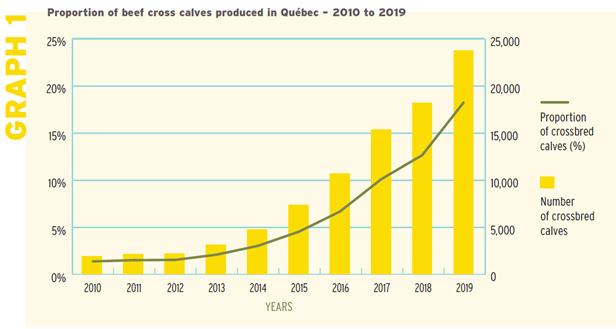Healthy Calf Conference
Follow to stay up-to-date on all Healthy Calf Conference updates. Speaker announcements, sponsorship information, registration announcements, and more.
Emily Croft, MSc. Student and Dr. Michael Steele, Associate Professor, University of Guelph
The use of sexed semen and beef-on-dairy breeding of dairy cows has been on the rise in recent years and has initiated changes in the calves that are available to the veal industry. Through these genetic selection programs, dairy farmers can use sexed semen to determine which high-producing cows will produce replacement heifers. In cows that are not selected to produce replacement heifers, the use of beef semen has become common. This produces a crossbred calf with increased value. These programs have been recognized for improving the environmental sustainability of producing calves on dairy farms and have elevated calves above being seen as co-products of dairy production. As these breeding programs continue to grow in prevalence, the role of crossbred calves in veal production remains in question.

Until recent years, the veal industry has been dominated by male Holstein calves. As these calves cannot be used as replacements in dairy herds, veal producers have had the opportunity to raise these calves as relatively low-cost co-products of the dairy industry. Consumers of veal look for a tender, lean and mild-tasting product, which has been achieved through the traditional raising practices of male calves within the Holstein breed. Crossbred calves have become increasingly common relative to Holstein calves, representing nearly 20 per cent of the calves produced by dairy farms in Quebec in 2019. An influx of crossbred calves in the years to come will disrupt traditional standards for raising veal, and the industry may need to change based on the challenges and opportunities these crossbred calves present.
The introduction of crossbred calves to the veal industry has led to some uncertainty from veal farmers and industry members. While the use of beef bulls to produce crossbred calves presents an opportunity for value-adding to calves for dairy farmers, it may concurrently shrink margins for veal farmers. Moreover, it may create concerns around product quality. Where Holstein bull calves provided consistency, crossbred calves are thought to have variations between male and female calves, as well as prominent breed differences. Variations in both the breed and sex of calves will result in differing growth capacities, carcass traits, and nutritional requirements. Kendra Keels of Veal Farmers of Ontario further identified issues with increased marbling in crossbred female calves, which would sacrifice the lean product targeted by veal producers. Integration of crossbred calves into veal production may require additional labour and new management techniques, such as grouping or individualized nutrition, to accommodate these differences and ensure the tender, lean veal product that consumers expect.
Crossbred calves may still hold some promise for veal farmers. At larger finishing weights of approximately 550 kilograms (1212 lbs.), previous research has shown that crossbred calves may have advantages in feed conversion, average daily gain and dressing percentage when compared to purebred Holstein calves. Further research into growth and carcass traits in crossbred calves being raised for veal may reveal profit margin saving benefits for veal farmers. Further exploration of the breed of beef bulls being used with Holstein cows, such as bulls with high genetic merit for growth and low marbling, may create opportunities for veal farmers to continue producing a high quality, consistent, and lean veal product from these crossbred calves.
“Crossbred calves will have a role within the veal industry, but breed will be an important consideration when deciding whether to enter each animal into the veal or dairy-beef market. Characteristics such as fat covering or marbling, sex, dressed yield, and performance, as well as calf cost premium should all be determining factors,” says Aaron Keunen of Mapleview Agri Ltd.
Crossbred calves may become increasingly available relative to purebred Holstein calves as the trend of beef-on-dairy breeding continues in the dairy industry. The growing population of crossbred calves may change the way the veal farmers manage and market their calves but could also present opportunities as greater understanding of the requirements and characteristics of these calves is established.
References available upon request.
Follow to stay up-to-date on all Healthy Calf Conference updates. Speaker announcements, sponsorship information, registration announcements, and more.
The Codes of Practice are nationally developed guidelines for the care and handling of farm animals. They serve as our national understanding of animal care requirements and recommended practices.